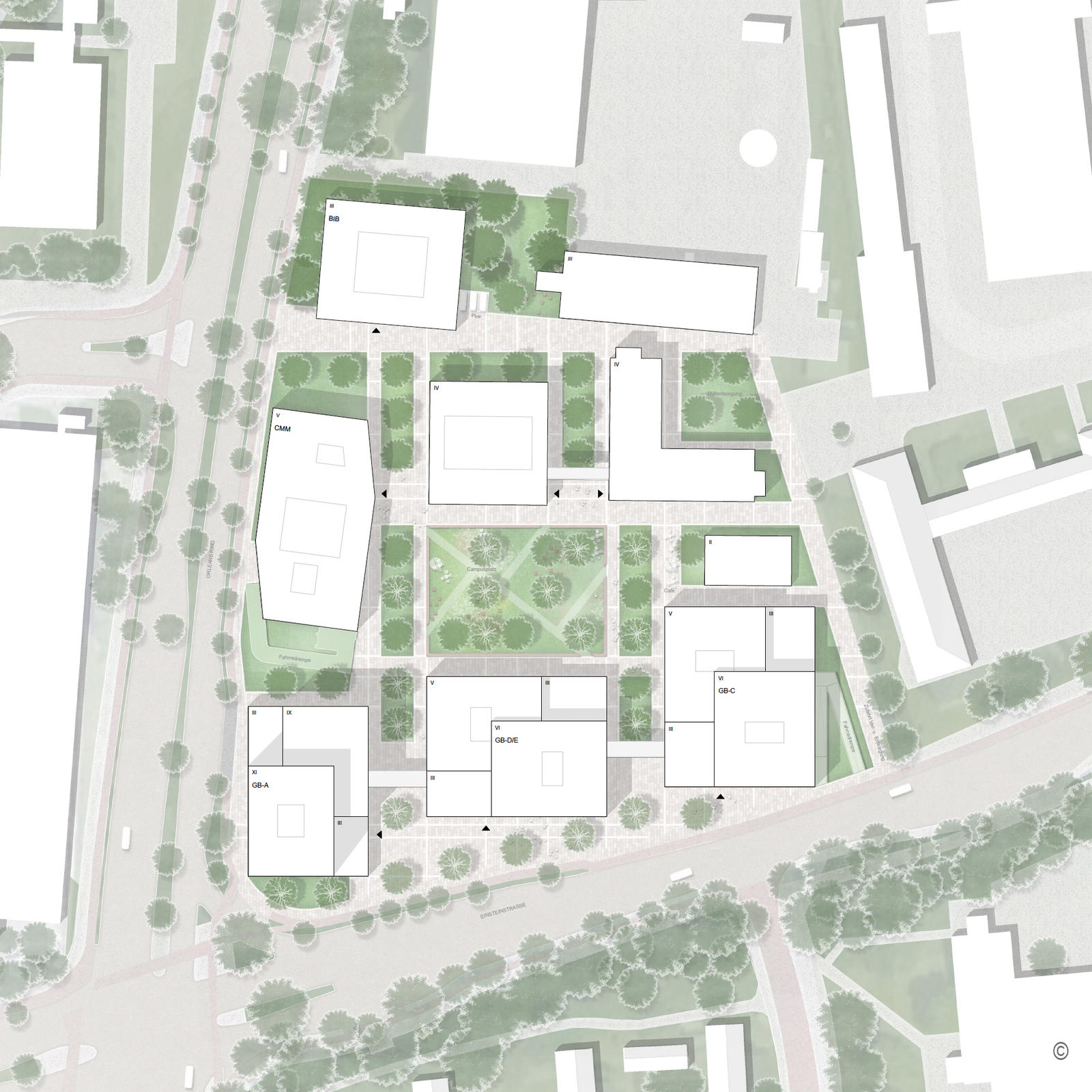The aim of the design is to create an identity-forming, open campus that links up with the urban environment to become part of the overall city structure. The heterogeneous existing building stock and the complementary new solitary building blocks are connected by an orthogonal path system. The routing forms the basic framework of the open space design. The overarching, public bicycle traffic is guided along the edge by a bicycle promenade, which avoids conflicts between pedestrians and cyclists. The campus buildings will be slightly offset from each other, making them individually more noticeable and visible. This thereby leads to better orientation and at the same time allows for easy rerouting of pathways into, on and out of the campus. Two wide alleys ensure permeability and expansiveness of the campus, facilitating traversal. At the same time, the structure provides subordinate access situations and further differentiated plaza situations. This strengthens the campus idea and allows more flexibility for future development of the area. In the center of the campus, a large square is created forming a contrast to the stressful everyday life through a wide green area overlooked by a grove of trees. In addition to serving as a place for students and staff to relax, meet and exchange ideas, the space can be integrated for events and a variety of public uses. As the heart of the campus, the flexibly usable, green campus center becomes a powerful cell of urban and functional transformation. An overarching linear structure develops a clearly legible identity through the urban cube buildings and the design of the open spaces, reflecting the structure important in mathematics and computer science. The building volumes form pedestals via offsets and staggering on the upper floors, which provide a scaled connection with the surroundings. Green roof gardens carry the motif of the campus into the buildings, creating high-quality open spaces in addition to ecological quality. The result is a unified ensemble of buildings, existing buildings and open spaces, which, despite its own character, is optimally integrated into the overarching urban image.


